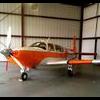I love my Rebuilt Acclaim
-
Members Online
- Hank
- Tmooney
- PT20J
- redrider7202
- Av8rjm
- 47U
- eman1200
- tperkins92
- varlajo
- wolfbyte
- ProtoFly
- toto
- Yetti
- dzeleski
- 1980Mooney
- Thedude
- pirate
- Paul Thomas
- Jakes Simmons
- Twin Lakes
- exM20K
- Sabremech
- Jimmyred
- Rwsavory
- Wingover
- Shrug
- BrentS
- Utah20Gflyer
- M20F
- 00-Negative
- MDMooney
- PWL
- thomas1142
- ElkoRandy20J
- ta2too


Recommended Posts
Join the conversation
You can post now and register later. If you have an account, sign in now to post with your account.